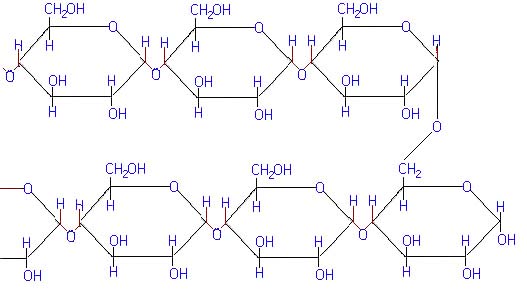By the healthiergang writer , student of Exercise, Sport and Health Sciences.
Training in Fasting: Useful or Counterproductive?
When we talk about training strategies, we often find ourselves literally immersed in a sea of information, many exact, others less, which contribute to creating more and more confusion in the poor heads of those who are looking for explanations about it, and perhaps do not have the knowledge. to be able to distinguish information (the real one) from misinformation (governed by the cruel world of marketing).
"Only those who know choose, otherwise they think they choose" A. Biasci
We encounter this typical situation when we go to tackle a “delicate” topic such as fasting training.
Who among you has ever tried to train after a more or less long period (at least 7-8 hours) of fasting? Among the most curious who have tried there will certainly be those who have benefited greatly and perhaps those who have not even managed to complete the training session. Why these substantial differences?
Starting from the assumption that each individual is a case in itself and must be treated as such, we will try to analyze the physiological, biochemical, endocrine processes that underlie the state of fasting and the respective training, to be able to understand what happens in the complex and fascinating machine called human body.
Objectively, it is impossible to analyze every single situation in detail, since everyone has their own lifestyle, their own schedules, where the circadian rhythms adapt accordingly. In this article we will analyze the state of morning fasting, after 7-8 hours of night sleep. The basic principles are also similar in cases of fasting not necessarily induced by night sleep (for example lunch at 13:00 training at 21:00), but with some more or less influential differences.
Let us try to list the characteristic aspects of the body as soon as it wakes up, after a whole night of absolute fasting.
1. The Glycogen Stocks
 Let's start with the glycogen stores. These are partially depleted. Difficult to give numbers if not very approximate (roughly halved). But beware, we are talking about hepatic glycogen stores, and not muscle, as many mistakenly think.
Let's start with the glycogen stores. These are partially depleted. Difficult to give numbers if not very approximate (roughly halved). But beware, we are talking about hepatic glycogen stores, and not muscle, as many mistakenly think.
Only hepatic glycogen contributes to the regulation of blood glucose (glycogenolysis) and not muscle (absence of the specific enzyme Glucose-6-phosphatase). The latter, in fact, are almost intact due to the negligible muscular activity carried out during sleep.
Normally a state of light hypoglycemia, I stress light. We remember that we are homeostatic organisms, mother nature has already thought about balancing everything.
Analyzing the hormonal picture we find a high presence of hormones such as: glucagon, adrenaline, noradrenaline, somatotropin, cortisol, thyroxine, and at the same time minimal insulin levels. This endocrine situation on the whole induces high activity lipolytic. How does this affect any training?
2. The Cardio Workout
 Let's start by distinguishing two different types of workouts that must be analyzed individually: cardio training (mainly aerobic type) and weight training (mainly anaerobic type).
Let's start by distinguishing two different types of workouts that must be analyzed individually: cardio training (mainly aerobic type) and weight training (mainly anaerobic type).
In the first case, the hormonal levels which by their nature stimulate the lipolytic process, are very useful, if the intent is to oxidize fats for energy during activity.
Our body continuously consumes energy. The fuel is provided by a mixture of fats and sugars, in varying proportions, influenced by multiple factors.
In this case, where carbohydrates are relatively low, the body will inevitably try to draw energy mainly from the fats deposited in the hateful fatty tissue (always within the limits and respecting the synergy of the energy mechanisms).
Awesome, isn't it?
This is one of the main benefits of a fasted cardio workout.
However, it is also true that everything must be contextualized. It would be unthinkable to carry out a high-commitment, high-intensity and long-lasting cardio activity while fasting (inevitable demand for carbohydrate availability and excessive concentrations of cortisol).
However, we refer to aerobic workouts of medium-low intensity and duration, 30-40 minutes with a heart rate of 50/60% of the HRmax.
By respecting these parameters, there are almost zero contraindications to carry out this type of activity, where we have seen that it has an excellent impact on lipid oxidation.
3. Weight Training
 In this type of training the lipolytic action, if you like, can also be neglected, given the nature of the activity.
In this type of training the lipolytic action, if you like, can also be neglected, given the nature of the activity.
The benefits of a good fasted workout are to be sought elsewhere.
First of all, the state of general lightness. It can also be a subjective factor, but the feeling of a good workout on a completely empty stomach is still incomparable. Seeing is believing!
Now let's move on to something more objective: the availability of blood.
After consuming a meal, the digestive system involved in the process of digestion and absorption inevitably draws a large part of the blood to carry out its normal activities. Since the total amount of blood (volume) is constant and well defined, we realize that the blood mass "subtracted" from the digestive system, is less in the muscles at work.
Recall that an important blood supply to the skeletal muscles at work is fundamental, since it is responsible for the continuous supply of energy, fuel, oxidizer, building material, hormones, etc. and at the same time it has the task of removing waste materials, CO2, various catabolites, lactate, etc. from the cells. indispensabili for the success of intense muscular activity, and a subsequent phase of repair and growth.
Another no less important aspect of fasting training is the general attention and concentration capacity given by the secretory activity of the adrenal gland.
As we have seen previously, high levels of catecholamines (adrenaline and noradrenaline), not only directly induce lipolysis (they stimulate the activity of Hsl) but effectively contribute to improving mental focus, leading the body into a state of "alert".
Finally, it can prove to be a great tool for improving insulin sensitivity by carrying transporters GLUT-4 of myocytes on the surface, so as to capture from the blood even in the absence of insulin.
These are the main advantages of a good fasted weight training.
Those who demonize this type of training, claiming that it is unsustainable due to low energy reserves, ignore the nature of skeletal muscle and the physiology of contraction.
A "classic" weight training, consisting of sets of 3-12 repetitions with TUT (Time Under Tension) generally no longer than 30 seconds, it mostly exploits the anaerobic alactacid and partly lactacid metabolism (however sustainable by the almost intact muscle glycogen reserves, as we have seen previously).
From this we deduce that the fasting condition does not compromise the ability of the muscle to perform alactacid and lactacid gestures contained, since the phosphates (ATP and CP) and glycogen deposited in the muscles are sufficient to satisfy the energy demands of the system.
Also in this case everything must be contextualized. A workout consisting of tri-sets, giant sets, etc. with TUT of minutes and protracted for hours is not recommended.
4. Various Considerations
- The overall dietary status, in particular the last meal of the previous day, has a decisive impact on the success of the morning workout.
There will be a substantial difference if you had dinner the night before with 200g of pasta, steak and so on, or if you ate chicken breast and broccoli.
- For many, fasting also means without drinking. Nothing more wrong! Drink abundantly, both before and during the session, to prevent dehydration and restore normal water parameters.
- When the workout is complete it is indispensable integrate everything the body needs. What should we bring? Simple: energy and building material. It is a good omen to consume a post-workout meal composed of small molecules, immediately assimilable, highly bioavailable and suitable for transport in the blood.
Wide space for food supplements, promoted maltodextrin, dextrose, vitargo, amylopectin, fructose, whey isolate, hydrolyzed, various amino acids, leucine, glutamine, creatine, electrolytes, all according to your needs. This is where, due to their nature, food supplements can prove to be truly useful under certain conditions.
5. The Cons
Having analyzed the pros, let's now consider the cons of fasting training.
Contraindicated for people with particular problems of hypoglycemia, pressure drops etc ...
Absolutely to be avoided for very high intensity activities over time, or in any case in all sports that require large quantities of sugars for long periods. In these cases glucose is essential, and the body will get it from other sources, such as the proteins that make up our beloved muscles, if it has no other choice (muscle proteolysis and gluconeogenesis)
Training on an empty stomach can negatively affect mental stress and should absolutely be avoided if it involves an excessive reduction in the hours of sleep.These are work strategies suitable for subjects who are in good health and want to try something new.
Now you have all the knowledge for to understand e choose independently if it can come in handy, if it's for you or if you let it go a priori.
Try it if you feel like it!
As with anything, use your head and have some common sense ...
Good workout!


























